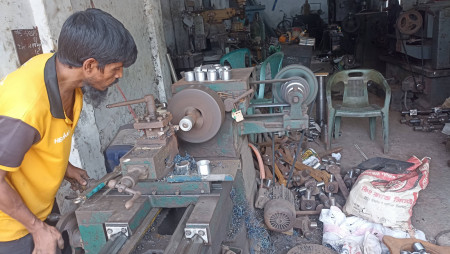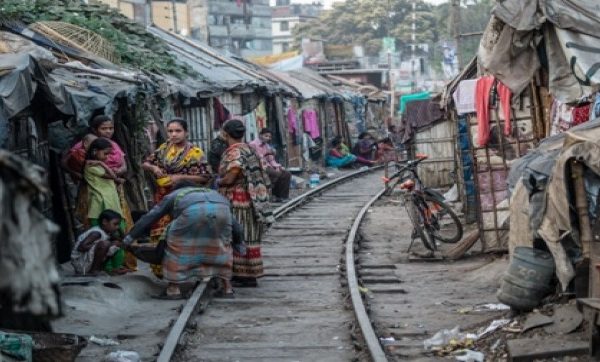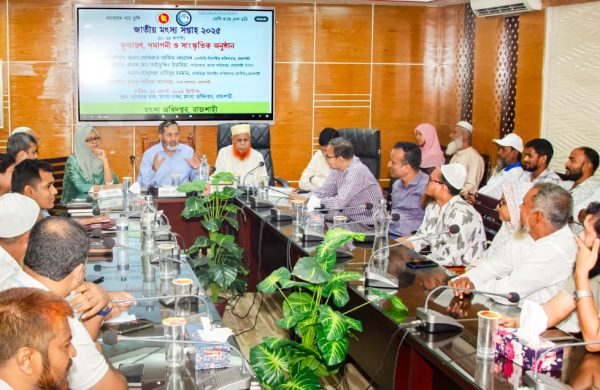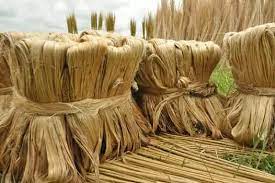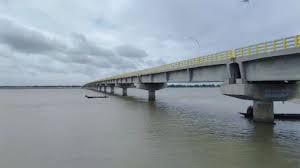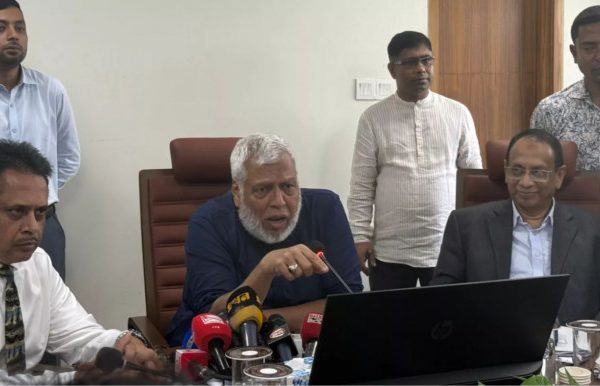High price, low catch: Hilsa scarcity hurts fishermen, consumers
- Update Time : Monday, August 25, 2025
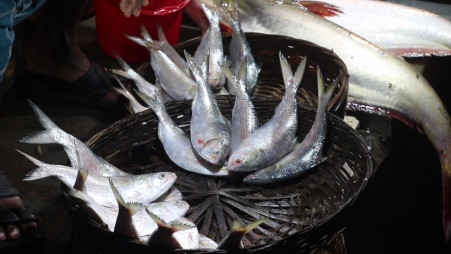
Staff Correspondent:
Bangladesh’s prized hilsa, once plentiful in rivers, is fast dwindling — a shock to fishermen and a burden on consumers facing soaring prices.
Take Motirhat in Lakshmipur, for example. Once a bustling hub for hilsa, it is now a shadow of its former self.
The market on the bank of the Meghna River used to operate from dawn until late at night, but today stays open only two to three hours.
Sandbars, pollution, and navigability problems have sharply reduced hilsa stocks, leaving fishermen unable to cover even their fuel costs.
Julhas Majhi, a fisherman from Motirhat, said he spent Tk1,900 on fuel and returned with only nine small hilsa weighing about two kilograms in total, which sold for Tk2,300.
“I have been fishing for more than 20 years. I have never seen such a bad time. Where will we go?” he said.
The main hilsa season runs from July to October, but this year, even in peak season, the catch has been poor. The shortage has pushed prices beyond the reach of most households.
According to the Department of Agricultural Marketing, hilsa prices are now about 21% higher than the same time last year.
In Dhaka’s retail markets, hilsa weighing more than one kilogram sells for Tk2,200–2,600 per kg. Medium-sized fish of 800 grams to one kilogram cost Tk1,600–2,200, while smaller fish fetch Tk600–1,600.
Experts attribute the decline in river hilsa to multiple factors, including riverbed siltation, encroachment, pollution, climate change, and disruptions caused by dams and bridges.
Continuous rainfall since July and rough seas during the new moon and full moon periods have further hampered fishing.
Wholesale dealers at Motirhat said that one-kilogram river hilsa currently sells for Tk2,500–2,800 per kg, while fish of 700–800 grams cost Tk1,800–2,000.
Daily sales have plummeted from over one tonne a few years ago to just 250–300 kilograms now.
“They get only four or five hilsa after spending the whole day in the river. This does not even cover expenses,” said Ayub Ali, a dealer, adding that many fishermen have stopped going to the river.
WHAT ABOUT OTHER AREAS
Fishermen and traders in Hatia and Barishal reported similar struggles.
Mannan Rana, a trader at Charchenga Bazar in Hatia, said sending a trawler to sea costs Tk3.5–4 lakh, including fuel and labour.
“If the fish sold for more than that, fishermen and trawler owners would share the profit. But now, it does not even cover the costs,” he said.
Despite hopes of large catches during the new and full moons, hilsa have not appeared in expected numbers due to rough weather.
In Barishal’s Port Road wholesale market, sellers displayed small amounts of fish at high prices.
Hilsa weighing 1.5 kilograms were selling for Tk2,800–2,850 per kg, one-kilogram fish for Tk2,450–2,550, and smaller sizes for Tk1,500–2,000.
“There was a time when this market was overflowing with fish. Now there are hardly any,” said Abdul Kader, a local seller, blaming the decline on reduced river currents and navigability problems linked to bridge construction.
Despite a steady rise in hilsa production over the past decade, the latest figures show a setback.
According to the Department of Fisheries, the hilsa catch fell from 571,000 tonnes in 2022–23 to 529,000 tonnes in 2023–24, a decline of 42,000 tonnes.
WHAT’S BEHIND THE DECLINE?
Hilsa researchers note that from July to October, during the monsoon, water in the lower Meghna River becomes clear and fresh, creating ideal conditions for hilsa to migrate from the sea.
Strong currents and increased oxygen levels during this period also support spawning.
However, reduced rainfall, changing river courses, lower water levels, and rising temperatures have recently disrupted these conditions, leading to fewer hilsa in the river.
The Bangladesh Fisheries Research Institute’s report hilsa Fisheries Research and Development states that while hilsa spawn year-round, the peak season is September and October.
During the full and new moons, mature hilsa migrate to the Meghna estuary to lay eggs. Large numbers of mother hilsa are caught at this time, with 90–100% carrying eggs.
The report highlights multiple threats behind the decline of hilsa: climate change, infrastructure construction, river pollution, and encroachment.
Rising global temperatures, increased water turbidity from siltation, and submerged shoals are obstructing hilsa migration from the sea.
Higher water temperature is affecting reproduction and feeding, while rising sea levels are pushing salinity into freshwater, altering breeding and nursery grounds.
Md Anisur Rahman, a hilsa researcher and former chief scientific officer of the Chandpur Fisheries Research Institute, said, “hilsa is a deep-water fish. If it is obstructed by a submerged shoal, it returns to the sea. The presence of hilsa is also significantly affected by uncontrolled sand extraction and pollution. The environment for hilsa production is being obstructed by the unregulated construction of infrastructure in the rivers and estuaries, and pollution from industrial factories.”
He added that catching hilsa in the sea is more expensive than in the river, which is contributing to higher prices.
“If the safety of hilsa can be ensured at three stages — laying eggs, growing up, and returning to the sea to prepare for reproduction the following year — then production will increase,” he said.
Barishal Divisional Fisheries Department Director Alfazuddin Sheikh told journalist “The presence of hilsa may be decreasing due to the loss of river depth and pollution. We need to do a stock assessment and collect data on the amount of fish being caught. Additionally, the programmes we have, including the ban, must be implemented properly.”
WHY HILSA BECOMING SCARCE
Fisheries and Livestock Adviser Farida Akhter has said hilsa production has declined due to the continued use of illegal nets, unchecked jatka (juvenile hilsa) fishing, and various natural causes.
The navigability of rivers, climate change, and so-called development activities are also among the natural reasons behind the decline in hilsa production, the adviser pointed out at a workshop today at the Barishal Club auditorium.
However, the adviser mentioned that strong measures, including drives, are being taken to boost hilsa production.
She said, “The availability of hilsa is decreasing due to current nets and other types of nets. We are taking strict measures against these.
“Drives are being conducted to stop illegal fishing. Hopefully, production will increase in the future, and prices will also go down.”
Regarding hilsa price regulation, the adviser said the government is planning measures to prevent multiple handovers of fish after they are caught in rivers and brought to the market.
“In grazing lands, many things are being developed in an unplanned way, which is not desirable at all. As a result, important resources like buffaloes are facing losses.”
She said with proper policy measures, grazing lands can be preserved.
By increasing buffalo meat production, the country’s overall meat supply can also be boosted, she added.




